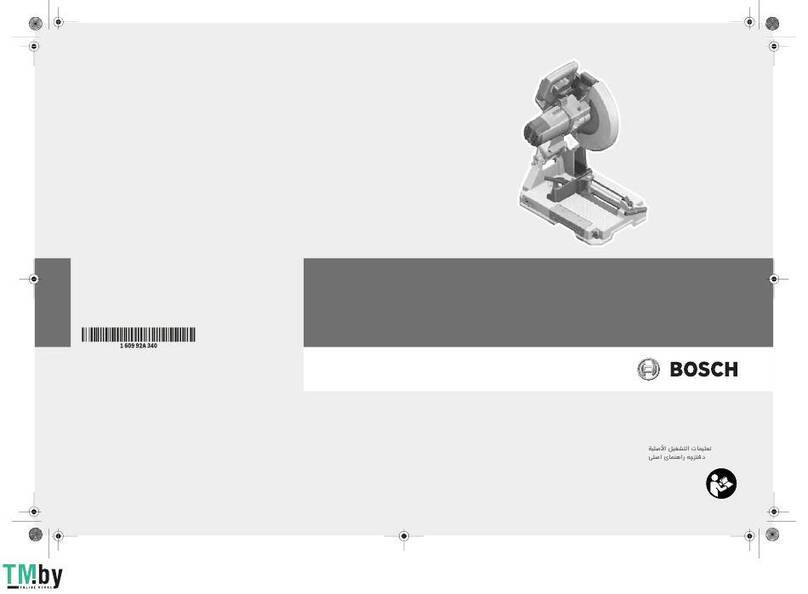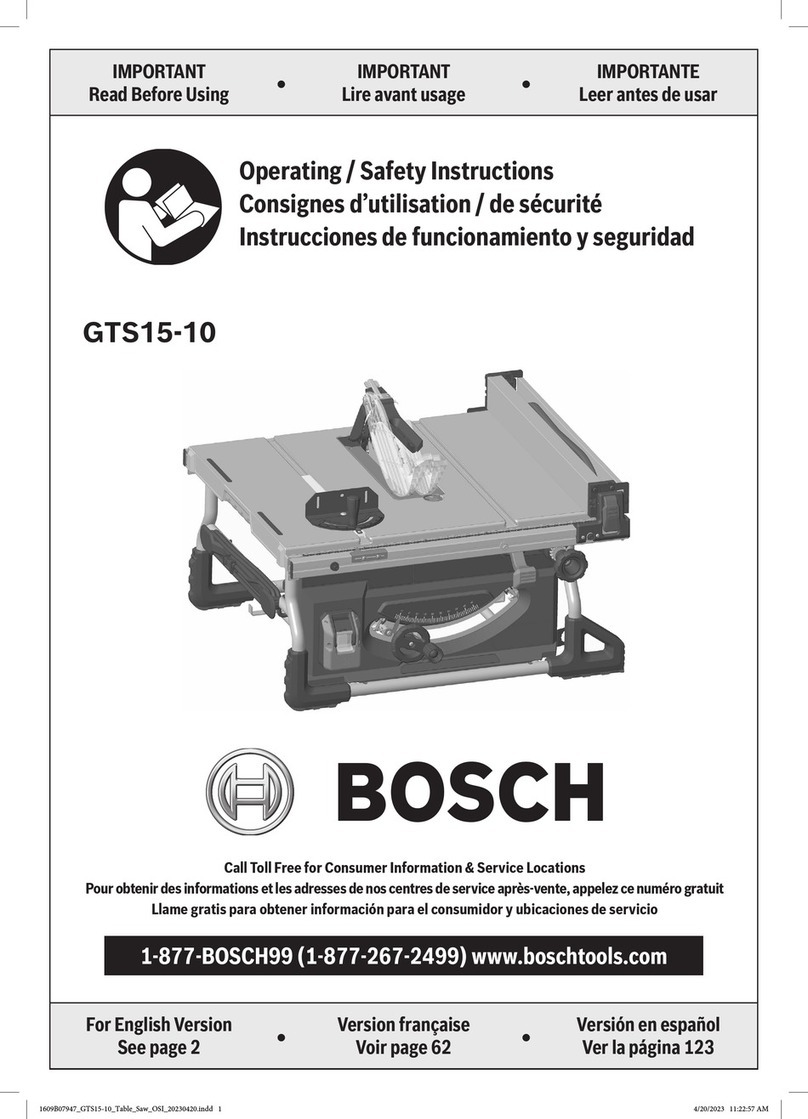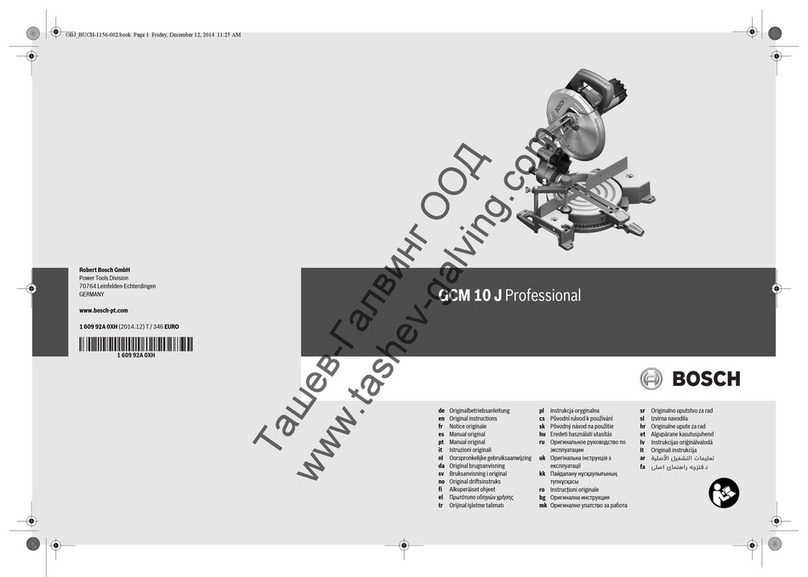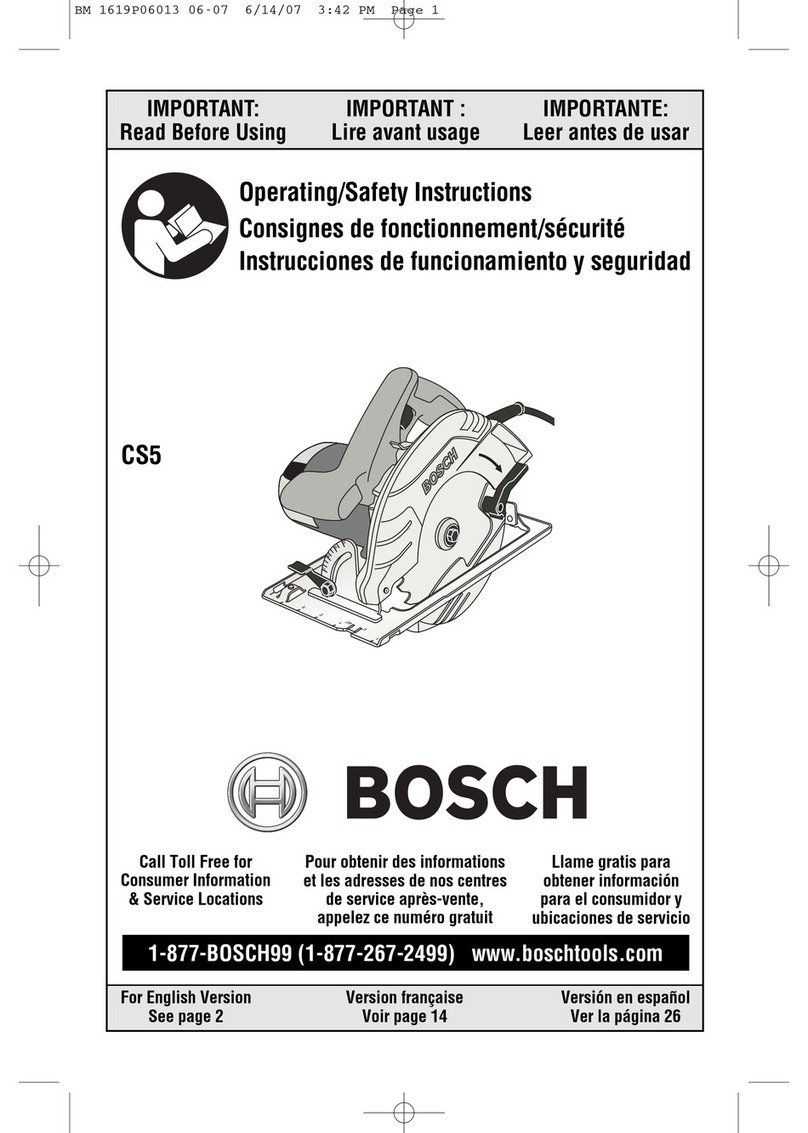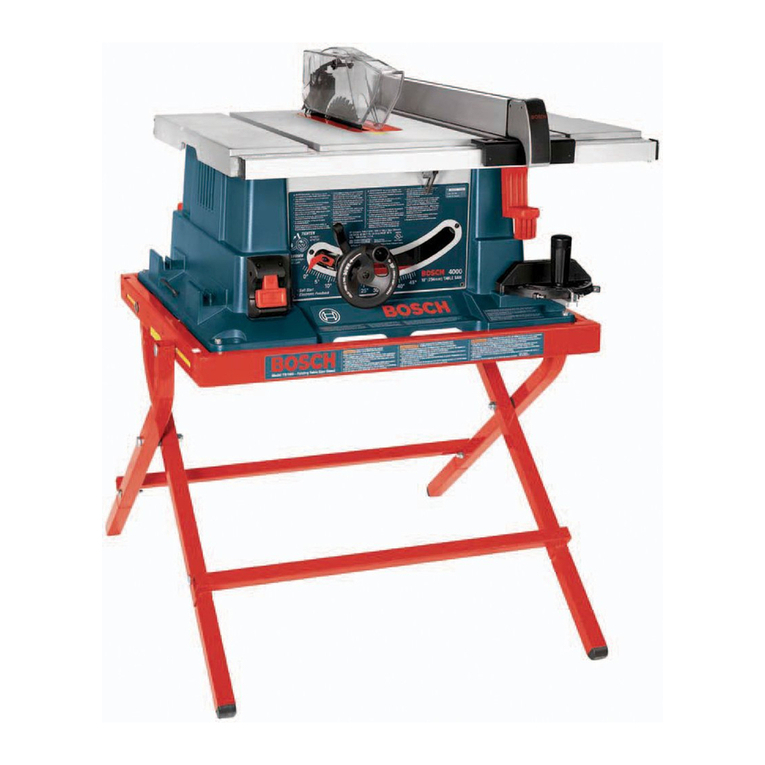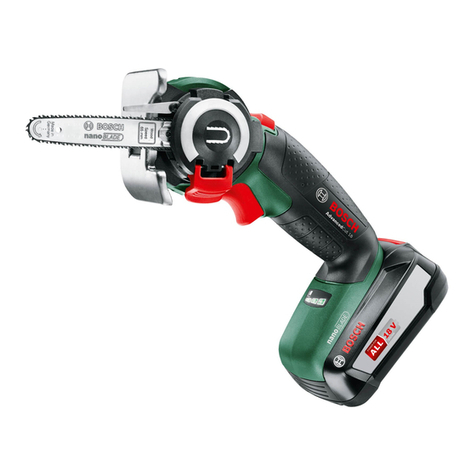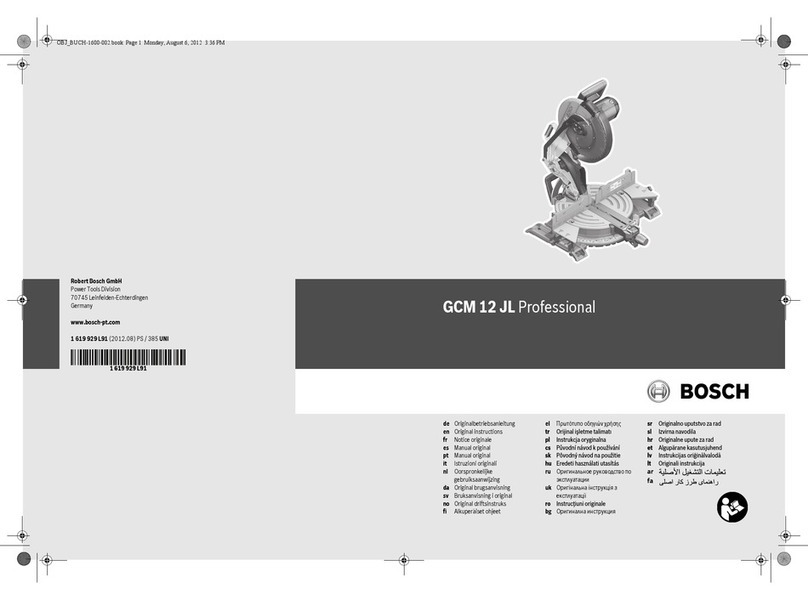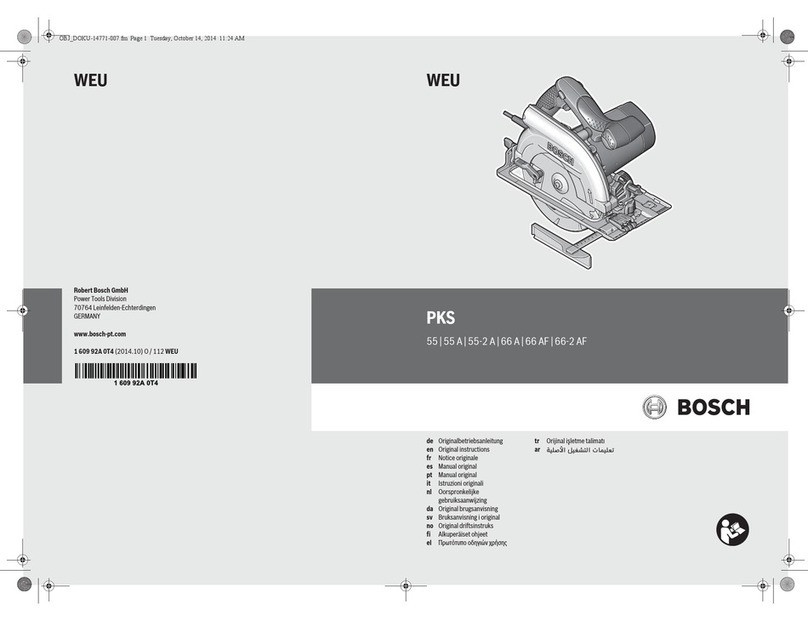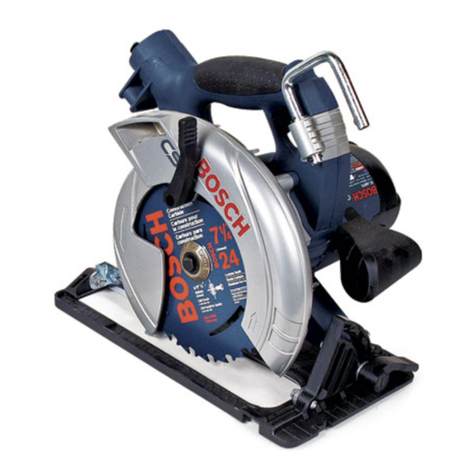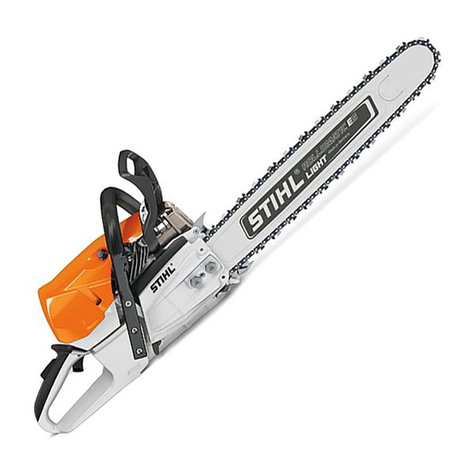English–1
1 609 929 E38 • (05.02) PS
1 GENERAL SAFETY RULES
FOR ELECTRIC TOOLS
Read and understand all in
structions. Failure to follow all in
structions liste below, may result
in electric shock, fire an /or serious personal injury.
S VE THESE INSTRUCTIONS.
Work Area
Keep your work area clean and well lit. Cluttere
benches an ark areas invite acci ents.
Do not operate power tools in explosive atmo
spheres, such as in the presence of flammable
liquids, gases, or dust. Power tools create sparks
which may ignite the ust or fumes.
Keep bystanders, children, and visitors away
while operating a power tool. Distractions can
cause you to lose control.
Electrical Safety
Grounded tools must be plugged into an outlet
properly installed and grounded in accordance
with all codes and ordinances. Never remove the
grounding prong or modify the plug in any way.
Do not use any adaptor plugs. Check with a
qualified electrician if you are in doubt as to
whether the outlet is properly grounded. If the
tools shoul electrically malfunction or break own,
groun ing provi es a low resistance path to carry
electricity away from the user.
void body contact with grounded surfaces such
as pipes, radiators, ranges and refrigerators.
There is an increase risk of electric shock if your bo y
is groun e .
Don't expose power tools to rain or wet condi
tions. Water entering a power tool will increase the
risk of electric shock.
Do not abuse the cord. Never use the cord to car
ry the tools or pull the plug from an outlet. Keep
cord away from heat, oil, sharp edges or moving
parts. Replace damaged cords immediately.
Damage cor s increase the risk of electric shock.
Personal Safety
Stay alert, watch what you are doing, and use
common sense when operating a power tool. Do
not use tool while tired or under the influence of
drugs, alcohol, or medication. A moment of inat
tention while operating power tools may result in seri
ous personal injury.
Dress properly. Do not wear loose clothing or
jewelry. Contain long hair. Keep your hair, cloth
ing, and gloves away from moving parts. Loose
clothes, jewelry, or long hair can be caught in moving
parts.
void accidental starting. Be sure switch is off
before inserting plugging in. Carrying tools with
your finger on the switch or plugging in tools that have
the switch on invites acci ents.
Remove adjusting keys or wrenches before turn
ing the tool on. A wrench or a key that is left attache
to a rotating part of the tool may result in personal in
jury.
Do not overreach. Keep proper footing and bal
ance at all times. Proper footing an balance en
ables better control of the tool in unexpecte situa
tions.
Use safety equipment. lways wear eye protec
tion. Dust mask, nonski safety shoes, har hat, or
hearing protection must be use for appropriate con
itions.
Power Tool Handling and Usage
Use clamps or other practical way to secure and
support the workpiece to a stable platform. Hol
ing the work by han or against your bo y is unstable
an may lea to loss of control.
Do not force tool. Use the correct tool for your
application. The correct tool will o the job better an
safer at the rate for which it is esigne .
Do not use tool if switch does not turn it on or off.
A tool that cannot be controlle with the switch is an
gerous an must be repaire .
Disconnect the plug from the power source be
fore making any adjustments, changing acces
sories, or storing the tool. Such preventive safety
measures re uce the risk of starting the tool acci en
tally.
Store idle tools out of reach of children and other
untrained persons. Tools are angerous in the
han s of untraine users.
Maintain tools with care. Keep cutting tools
sharp and clean. Properly maintaine tools with
sharp cutting e ge are less likely to bin an are easier
to control.
Check for misalignment or binding of moving
parts, breakage of parts, and any other condition
that may affect the tool’s operation. If damaged,
have the tool serviced before using. Many acci
ents are cause by poorly maintaine tools.
Use only accessories that are recommended by
the manufacturer for your model. Accessories that
may be suitable for one tool, may become hazar ous
when use on another tool.
WARNING
